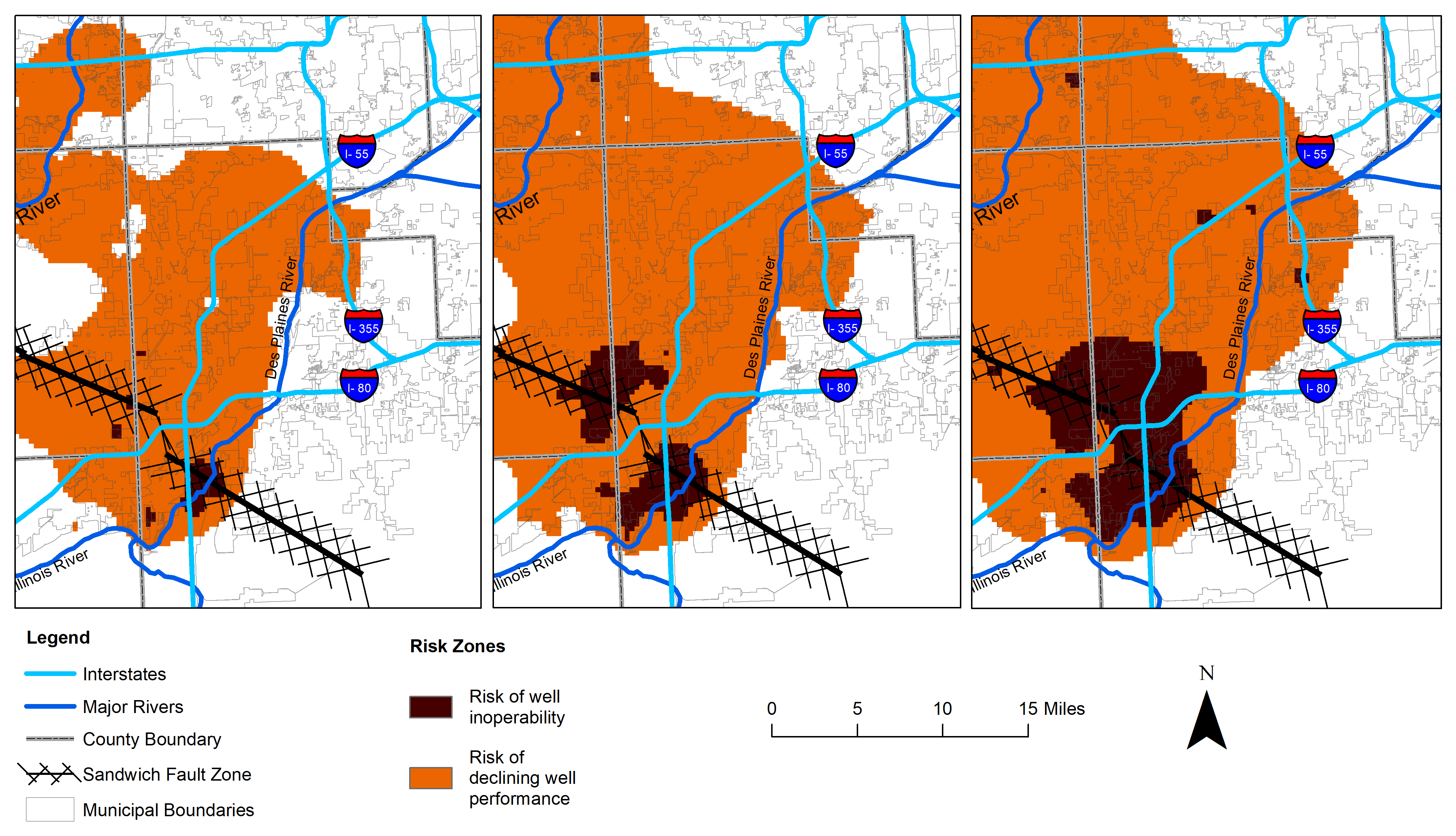Chicago's Southwest Suburbs

Photo by Michael Jeffords, INHS
In northeast Illinois, communities rely predominantly on two aquifers to meet the drinking water needs of their people:
1) The Deep Sandstone aquifer. These aquifers range from 400 to 1800 feet deep in the region. In 2018, the City of Joliet assessed its long-term water supply and found that the city should change from this aquifer as its water supply source by 2030. A three-year follow-up study has been initiated with a collaboration among the Illinois State Water Survey and multiple communities and industries in the southwest suburbs of Chicago.
2) The Shallow Dolomite aquifer. Water here is closer to the surface and more easily replenished. However, it is also more vulnerable to contamination. Chloride is a growing concern to the health of the aquifer, and the Illinois State Water Survey is studying how chloride reaches the subsurface and where high concentrations are found in the region.
Models for both the shallow and deep aquifers, have been developed with frequent input from community leaders and water specialists in northeastern Illinois. Together, these entities form the Southwest Water Planning Group (SWPG) who meet regularly to discuss matters pertaining to the region’s water resources.
From the project inception, both the shallow and the deep models, were developed with frequent input from community leaders and water specialists in northeastern Illinois. Together, these entities formed the Southwest Water Planning Group (SWPG), active from September 2019 – June 2022, who met to discuss matters pertaining to the region’s water resources.
Pictured Above: Stakeholders at a January 2020 SWPG meeting. Photo credit: Nora Beck, Chicago Metropolitan Agency for Planning
Contract Reports
Executive Summary of the Contract

Additional Information
Deep Sandstone Aquifer
Video explaining the looming risk to groundwater resources in Northeast Illinois
Shallow Dolomite Aquifer
Report: Indicators of Groundwater Contamination within the Silurian Dolomite Aquifer
Report: Groundwater Quality within the Silurian Dolomite Aquifer in Will County, 2021
Story Map: Environmental Impacts of Chloride Contamination
Story Map: Land Use and Chloride in Will County
